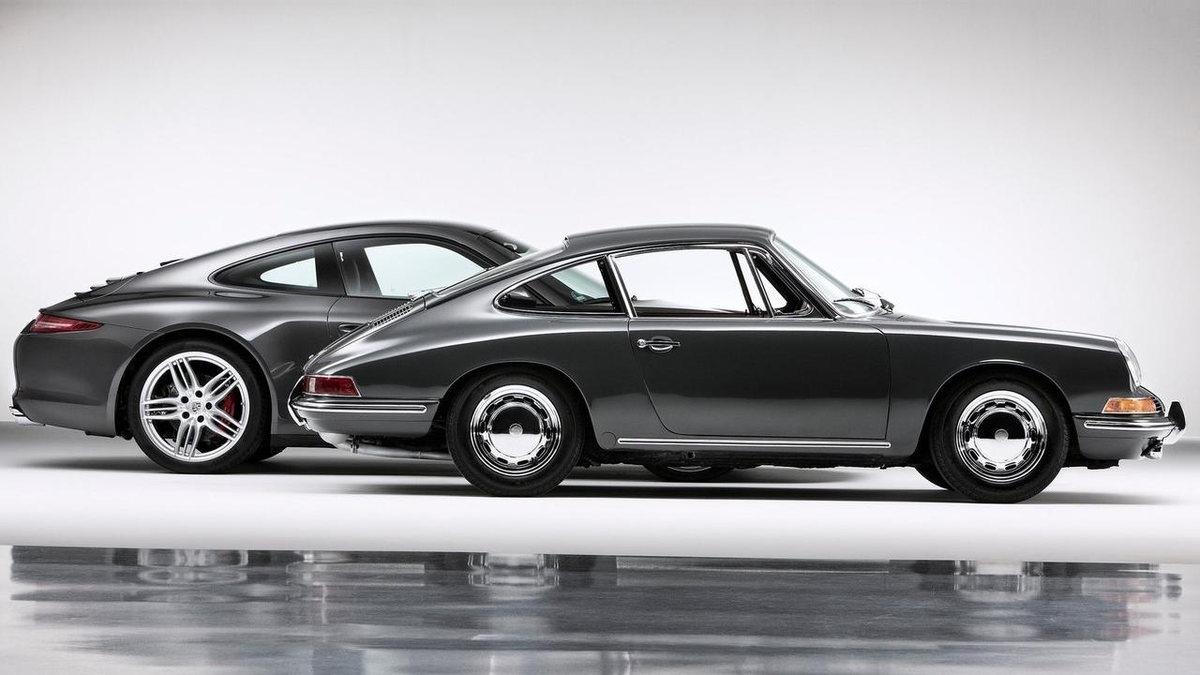How the Porsche 911 became a design icon
Its iconic silhouette helped make the 911 is the definitive Porsche and the seminal German sports car.

Ask a child to draw a sports car, and it’s likely the figure they draw will resemble the Porsche 911.
The 911’s iconic shape has been loved the world over for almost 60 years.
It’s impossible to imagine a Porsche that doesn’t sell the 911, and it’s equally difficult to understate the impact that the 911 has had on the sports car market and the wider automotive industry in general.
What was so special about the original 911 that it sparked an unbroken line of eight generations, each an evolution of the last?
The Porsche family is a true family, with the first three generations each creating their own masterpieces.
It was Ferdinand Porsche who created the original Volkswagen Beetle, and his son Ferry Porsche founded Porsche and designed its inaugural model, the 356.
The 911 was the work of Ferry’s son, Ferdinand Alexander ‘Butzi’ Porsche.
Ferdinand Porsche’s other grandson, Ferdinand Piëch, would eventually run the Volkswagen Group during the development of cars like the Bugatti Veyron.
The 911 was borne out of the recognition that the 356 was becoming increasingly dated, and that customers wanted a more luxurious, higher performance car.
Porsche had originally wanted to call the model the 901, however Peugeot claimed to own a trademark to all three-digit model designations with a “0” in the middle.
Instead of having a separate name in France, Porsche simply replaced the “0” with a 1, with the rest being history.
Design and mechanicals
A characteristic of great design is one that remains attractive and contemporary, but is also confident enough to not feel the need to reinvent itself with every generation.
More than any other car this is true of the 911, and its design is perhaps its most distinguishing feature, with an unmistakeable look carried forward to today’s model.
For the original 911, the distinctive, curved fastback shape and front end with low bonnet and circular headlamps were not purely stylistic, but instead the most elegant and aerodynamic way to package the key mechanical characteristics of the car, namely a 2+2 layout paired with an air-cooled, rear engine, rear wheel drive drivetrain.
Although this layout did have disadvantages in the original 911, with its weight distribution making it prone to oversteer, it also provided benefits within a sports car context.
Foremost was that placing the heavy engine above the driven wheels and on top of the drive axle pushed them further into the road, enabling extra grip and therefore excellent acceleration.
Prior to the advent of all-wheel drive, these characteristics were especially beneficial during winter driving on icy roads.
From a practical perspective, the rear-engine layout enabled a more spacious rear seat, whilst still allowing for a sizeable luggage space at the front of the car.
In addition to the mechanical layout, the original 911 was renowned for the engine itself. Unlike typical V6 or V8 designs, its horizontally-opposed design allowed it to be placed low in the car, providing a low centre of gravity.
Locating each bank of cylinders opposite each other provided a force-cancelling effect during engine operation; the forces and vibrations exerted by one cylinder would be cancelled out by the one opposite, much like two boxers of equal strength joining fists.
Overall, this provided an inherently smooth engine design with reduced levels of NVH, particularly important given Porsche’s status as a prestige marque.
Another key characteristic of the 911’s engine was that it was air-cooled (rather than water cooled). This delivered further dividends by reducing weight and complexity, improving reliability, and reducing maintenance costs through a simplicity of parts.
In addition to driving dynamics, locating the engine just above the driven wheels also cut the distance that power and torque had to travel to reach the wheels, and in turn, this was another way to minimise driveline losses.
Even the creation of the eye-catching 911 Targa convertible in 1967 was a fortuitous 'accident'.
Named after the Targa Florio race in Sicily, it featured a removable hardtop and distinctive fixed anti-roll bar – but in reality, the Targa was designed to pre-empt US road safety legislation that Porsche feared would ban completely open convertibles.
This article is published under license from CarExpert: the original article can be viewed here







Virgin Australia - Velocity Rewards
24 Jan 2018
Total posts 775
My Father-in-Law (of 15+ years) has a couple of 356s, I am staggered at what they're worth for such an olde car. Only this year, for the first time, did he ask/offer if I wanted to take one out for a drive. Raising her eyebrows, the wife smiled at me knowingly, as it to say "Well done honey, you've finally 'made it' ".
Ha! And I thought he was just escorting me to the garage to help select a vehicle (as if I needed a bloody chauffeur!).
Hi Guest, join in the discussion on How the Porsche 911 became a design icon